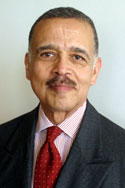ARCHIVES
OF EDITORIALS
April 29, 2004
Beyond race
May 17 will be the fiftieth anniversary of The U.S.
Supreme Court decision in Brown v. Board of Education. The Court
held that racial discrimination in public schools was inherently
discriminatory even if the facilities and resources were “separate
but equal.” With a stroke of the pen the Court overruled
the decision in Plessy v. Ferguson which had been the law since
1896.
There has been some confusion since the Brown decision because
many people have believed, quite erroneously, that the ruling
required racial integration of the schools. In fact, the ruling
was more narrow than that. It simply made it unconstitutional
to segregate children in public schools as a matter of policy.
Supporters of school integration made several efforts over the
years to merge school districts. They understood that white flight
from cities to the more affluent suburbs was the only way to maintain
a pale complexion in the schools.
The Civil Rights Project at Harvard University has monitored the
racial integration of public schools over the years. They have
just released two reports which assess the impact of race in the
Boston metropolitan school districts. One by Chungmei Lee is entitled
“Racial Segregation and Educational Outcomes in Metropolitan
Boston.” The other by Joseph Berger, Suzanne Smith and Stephen
Coelen is entitled “Race and the Metropolitan Origins of
Postsecondary Access to Four Year Colleges: The Case of Greater
Boston.”
The first report makes it clear that when the students in a school
are overwhelmingly white, then that school is as segregated as
an urban school that is all black and Latino. According to demographic
projections, the population of this country will be predominantly
African American, Latino and Asian by mid-century. Whites who
are uncomfortable with that will be at a decided disadvantage.
Unlike most capital cities, Boston is a small part of the metropolitan
area. Of the 767,601 students in the metropolitan area, 76 percent
are white, 10 percent are Latino and nine percent are black. Only
eight percent of the public school students in the metropolitan
area are in Boston and only two percent of the white students.
It is highly likely then than the white school age population
of Boston will continue to decline. According to the 2000 Census,
only 10 percent of the city’s white population is younger
than 18 years of age. Thirty-one percent of the African Americans
and 33 percent of the Latinos are younger than 18.
The most disturbing statistic is that 97 percent of schools that
are 90 percent minority have a majority of students who are poor
enough to be eligible for free or reduced price lunch. However,
only one percent of the students in schools which are 90 percent
or more white are poor enough for free lunch. The poor educational
outcomes correlate as well to the poverty of the students as to
their race.
The second report shows how low educational performance leads
to low SAT scores and diminished opportunities for admission to
four-year colleges. The lack of a Bachelor’s degree will
usually result in average wages of $32,000 per year compared with
$53,600 for college graduates, so the cycle continues.
It appears that there is a policy to under educate the poor, a
policy as debilitating as racial discrimination. Perhaps a legal
attack based upon discrimination against the poor offers a more
fruitful line of legal attack for the future.
Home
Page

